“The only idea more overused than serial killers is multiple personality,” says screenwriter Charlie Kaufman in Adaptation, which is, in Wikipedia’s parlance, “a 2002 American semi-autobiographical drama metafilm,” and which has nothing else to do with this article except mentioning multiple personality disorder and being seriously pretty much like the best movie ever.

Kaufman has a point, though; our culture has been having a bit of a love affair with multiple personality disorder (also known as Dissociative Identity Disorder) for the last several years – as well as certain other mental illnesses that many writers seem to understand equally poorly. It’s a bit of a double-edged sword, because in one way it’s important and a sign of progress that characters with mental health issues are appearing in popular artworks at all (especially when they’re not portrayed as bad guys), since it’s a subject that’s fraught with a great deal of stigma and outright denial in our society. And that doesn’t help anybody, even aside from being unrealistic. But on the other hand, exploiting mental illness, particularly when the writer in question doesn’t have a good idea of what a person with some specific condition would actually be like in real life, can be quite harmful and risks counteracting the work of those trying to educate the public and make people realize that those with diagnoses of mental illness are not a crowd of violent, slobbering lunatics but are in fact human beings, like everyone else, with their own problems and struggles.
But the reason that mental illness is increasingly becoming such a popular trope is that it has some very powerful metaphorical force. To the extent that mental illness can symbolize internal conflict and the clash between perception and reality, it is a useful tool for dramatizing themes that may otherwise be too subtle or intangible to make for exciting action or accessible comedy that mainstream art demands.
Looking at a few examples of the portrayal of mental illness across different media and genres, we can see not only what the author intended to express by its use, but also see what works and why, hopefully thereby presenting the beginning of a guide both for analysis of the trope and advice on how best to use it when creating an artwork that seems to demand it.
In Fight Club, both the original novel by Chuck Palahniuk and the film adaptation (not to be confused with the film Adaptation, aforementioned) directed by David Fincher, the unnamed protagonist (referred to for convenience as Jack) spawns an alter ego named Tyler Durden. The Jack/Tyler dichotomy personifies the tension-unto-cognitive-dissonance in the mind of the protagonist (and, according to the author and reflected in the slow-burning but persistent popularity of the novel and movie) between modern Western civilization’s strong valuation of capitalist materialism, physical comfort, and general superficiality on one hand, and the inborn desire for meaningful work, creative destruction or destructive creativity, and clearly defined basic societal goals on the other. These seemingly contradictory forces are categorized in terms of femininity versus masculinity, with the world as it is being portrayed as alienatingly feminine to the male protagonist, with the outburst of Tyler from Jack’s psyche symbolizing the inevitable overflow of suppressed masculinity into consciousness out of the subconscious.

The use of Multiple Personality Disorder makes the symbolism stand out, but Fight Club complicates the dichotomy it establishes in the first two acts with the events of the third. We have the thesis—that society has become stiflingly “feminized”—in the first act, followed by the antithesis—that the solution to this is to overthrow society by performing acts of “masculinity,” which are inevitably violent and subversive. The third act appropriately synthesizes the two opposing views; ultimately Jack rejects Tyler’s hypermasculine nihilism and, paradoxically, destroys the self-destructive part of himself that Tyler represents. But at the same time, Jack has by that time incorporated enough of Tyler’s extroversion and craving for reality over simple appearance to allow him to take decisive action in attempting to stop Tyler’s plans to physically destroy the city’s credit card companies, and also to find the courage to genuinely reach out to his love interest, Marla Singer, and try to create a real emotional connection between them without a constant need to couch everything in irony and hold back the vulnerability required for functional human relationships.
Woah, that was a hell of a run-on sentence. I’m going to leave it in there, though, and blame it on one of my other personalities.
So that’s how Fight Club used Multiple Personalities: to illustrate the sort of right brain/left brain, male/female nature that human beings are usually only vaguely aware of, if at all. And it works. But that’s only one possible expression of the disorder. In clinically diagnosed MPD patients, most of them display fewer than ten distinct identities, but there have apparently been cases where one person had up to 4,500! An identity that’s split in two works well when you are only trying to negotiate a dualistic sense of self, but what if your concern is more with the fragmentation of ourselves into countless different and often contradictory pieces?
In Marvel Comics, this is the position of the character David Haller, also known as Legion. David Haller is the illegitimate son of Professor Charles Xavier, founder and leader of the mutant superhero team the X-Men. Prior to forming the X-Men, Professor Xavier travelled to Israel to collaborate with a friend who operated a psychiatric hospital for the treatment of Holocaust survivors suffering from Post Traumatic Stress Disorder and other mental health issues. Using his strong telepathic powers, Xavier managed to successfully repair the mind of a patient there, Gabrielle Haller, who had been catatonic for years; after her recovery, they subsequently began a relationship. The two of them parted as friends, and Charles returned to the United States, but Gabrielle chose not to reveal that she had become pregnant. She went on to become a United Nations ambassador, and raise her and Charles’s son, whom she named David.
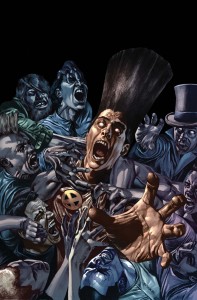
Cool hair is also one of his powers.
Later in life, a traumatic incident caused David’s powers to manifest but also his mind to shatter. What’s interesting is that the writers of X-Men could never seem to agree on what was actually wrong with Legion. At one point he was described as autistic. Later, as schizophrenic. And most recently, as having multiple personalities. These are all obviously very different conditions with vastly divergent symptoms, but they’ve all been attributed to Legion and have been treated at various times as more or less interchangeable. From a psychological and neurological standpoint, this demonstrates either shoddy research or simple carelessness. But narratively, Legion has to serve the purpose that the writer wants the story to take. At first it was assumed that David’s mind “absorbed” the personalities of others around him, particularly people who had died in traumatic ways. Currently, Legion is being written as having genuinely thousands of distinct personalities living inside his brain, each one possessing a different mutant power, and all of them vying for permanent control of his body, with David having to exert a great deal of effort to remain dominant, and an even greater strain to “overpower” one or more of the personalities if he wants to use their powers. It’s implied that if he could learn to control all his personalities as once, David would be one of the most powerful beings in the universe.
Let’s look at some of the narratological implications of that. Whereas in Fight Club the main tension was between order/chaos, comfort/action, female/male, the issues dealt with in X-Men, especially when it comes to stories about Legion, are far more multifarious. Legion’s identity—quite apart from his multiple personalities—is torn between numerous often conflicting poles rather than only two. David’s father is an American born into a wealthy family; his mother is a European-Israeli Holocaust survivor with deep traumas of her own. He was born in Haifa, then moved to Paris, and spent much of his life in Scotland. Ideologically, he is similarly torn. His father is the world’s most prominent mutant rights advocate, professing a philosophy of mutual cooperation between humans and mutants, who founded a school dedicated to training young mutants in the use of their powers and protecting the status quo against both mutants and humans who would seek to destabilize it. Xavier’s beneficence, however, is drastically undermined in David’s conception by the fact of his (Xavier’s) utter absence for most of his son’s life, and his extremely ambivalent behavior toward David even after he learned of the child’s existence. For someone who had devoted his life to helping mutants, Charles Xavier managed to help his own son precious little.
Charles Xavier’s oldest friend and greatest foe, Magneto, also had a great impact on Legion’s conception of human-mutant relationships. Magneto, a “mutant supremacist” type, worked with Xavier and David’s step-father, Daniel Shomron, at the institution where his mother had been committed. Magneto’s “proactive” approach to mutant rights seems to have influenced David’s thinking – Legion is rarely portrayed as a hero; at best, he is an anti-hero, well-meaning but either incapable or unwilling to follow his father’s example, even if he shares his dream. Indeed, when Legion awoke with the power of time travel, he went back in time in an attempt to kill Magneto before he could become a supervillain; something that he believed his father should have done a long time ago, or at any point since, but who had refused to do so out of what Legion considered a misguided sense of mercy. Of course, Legion ended up accidentally killing Xavier in the past rather than Magneto, leading to the alternate-universe “Age of Apocalypse.”
Legion’s problem is, in large part, an issue of crippling empathy. He sympathizes, quite against his will, with a number of divergent and often mutually exclusive identities and ideals. Aside from the complicated nature of his nationality, he is incapable of successfully navigating the cognitive dissonance that comes from the multiplicity of viewpoints he has come into contact with throughout his life. When he was young, the embassy in Paris at which his mother worked was attacked by terrorists, and his step-father was killed. For the first time, David’s powers manifested; not only did he deliberately incinerate the attackers, but he also quite unintentionally absorbed the mind of the terrorist leader. Legion was later shown to also absorbed the minds of the mutants Karma and Magik, as well as a young human girl named Marci.
So we see that, whatever sort of psychological condition the writers choose to call it, Legion’s fractured consciousness is a result of fragmentation from both inside and outside himself simultaneously. The broken, decidedly post-WWII world into which David Haller emerged and which his disordered mind represents is a place where we are expected not only to contend with the inevitably hybrid identity with which we are born, but also to consider the subjective experiences and contradictory narratives of our allies and opponents as well. In a clash between conservative or even reactionary, objective forces that impel us to assert our personality upon the world as we find it, and a more multicultural, multi-perspective subjectivity, where we’re practically coerced into empathizing with groups oppressed by the majority, with alternative majorities elsewhere in the world with whom we have varying degrees of contact and understanding, and even the history (or histories) of our own society (or societies) whose narratives we think (or hope) that we’ve outgrown…
Well, that ridiculous last couple of sentences ought to give you some idea of what Legion’s got to deal with. It’s a hell of a confusing way to live, and it makes it impossible to know not only what to believe, and what’s the right thing to do, but even who we are.
(In his current ongoing series, X-Men: Legacy, David is feeling a lot better, by the way, thanks for asking.)
To Be Continued…
Related Posts
The Mind is the Medium: Mental Illness in Pop Culture, Part 1 originally appeared on Overthinking It, the site subjecting the popular culture to a level of scrutiny it probably doesn't deserve. [Latest Posts | Podcast (iTunes Link)]





















 This is a series of chair paintings
This is a series of chair paintings




 This
This  Note: The Geekologie Writer does not condone cheating (on tests OR lovers) and managed to make his way through high school, undergrad, and a master's degree and he's dumb as shit so come on, if he can do it, so can you. Sure I failed the hell out of some tests, but you know what? I did it in a blaze of glory and HONOR.
Just in time for exams comes
Note: The Geekologie Writer does not condone cheating (on tests OR lovers) and managed to make his way through high school, undergrad, and a master's degree and he's dumb as shit so come on, if he can do it, so can you. Sure I failed the hell out of some tests, but you know what? I did it in a blaze of glory and HONOR.
Just in time for exams comes

 Because it's Friday and we all started drinking at lunch (we did all start drinking at lunch, right?), here's an Angry Birds wrecking ball spotted in the wild by
Because it's Friday and we all started drinking at lunch (we did all start drinking at lunch, right?), here's an Angry Birds wrecking ball spotted in the wild by  This is the 20-foot long (it looks longer to me but I've ridden real dinosaurs though so I should know)
This is the 20-foot long (it looks longer to me but I've ridden real dinosaurs though so I should know)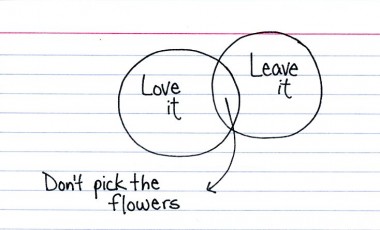










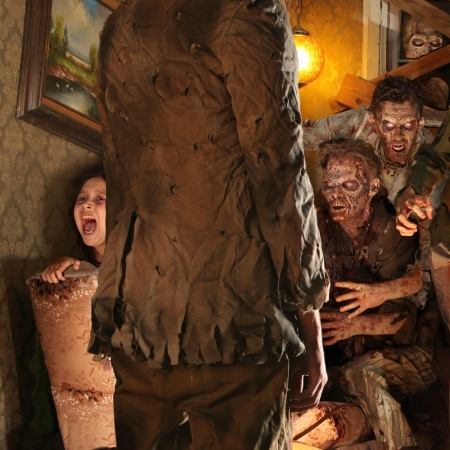























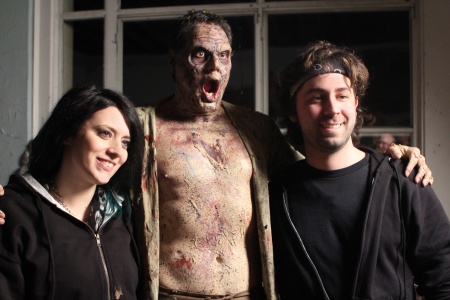






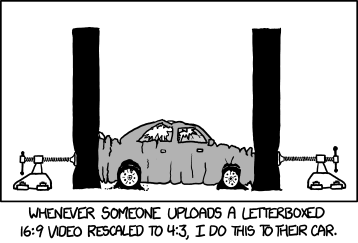

 This is
This is 